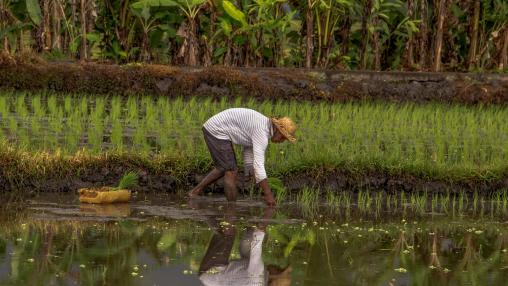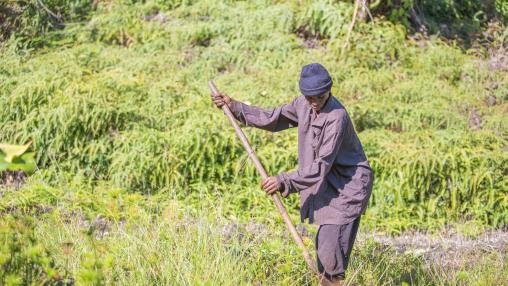The AMIS Market Monitor provides a synopsis of major developments in international commodity markets, focusing on wheat, maize, rice and soybeans. The analysis is a collective assessment of the member organizations of AMIS concerning the international market situation and outlook.
Agricultural Market Information System (AMIS) Market Monitor June 2025

Uncertainties over Trade Continue to Raise Concerns for Food, Fertilizer Markets
The FAO Food Price Index rose 1 percent in April, driven by increasing cereal, dairy, and meat price. While the Index was 7.6 percent higher than its April 2024 level, it remains nearly 20 percent lower than the record reached in March 2022.
Agricultural Market Information System (AMIS) Market Monitor May 2025

Commodity Prices Stable in March, But Concerns over Trade Remain
The FAO Food Price Index remained stable in March, with falling cereal and sugar prices balancing rising meat and vegetable oil prices. The Index was almost 7 percent higher than its March 2024 level but still remains significantly below March 2022 levels.
Agricultural Market Information System (AMIS) Market Monitor April 2025

Food, Fertilizer Prices Continue to Rise Amid Trade Uncertainties
Rising vegetable oil, cereal, sugar, and dairy prices drove the FAO Food Price Index up by 1.6 percent in February. However, overall prices remain almost 21 percent lower than the peak seen in March 2022.
Agricultural Market Information System (AMIS) Market Monitor March 2025

Most Commodity Prices Decline, But Concerns Over Trade, Climate Remain
The FAO Food Price Index declined by 1.6 percent from December. While the Index was 6.2 percent higher than its January 2024 level, it remains 22 percent below its peak of March 2022.
Agricultural Market Information System (AMIS) Market Monitor February 2025
Markets are also watching for potential changes in US trade policies and the responses from trading partners. This month's feature article reveals no evidence of long-term global yield growth deceleration. Instead, slow yield growth in certain commodities, regions, or countries appears to have been offset by accelerated growth elsewhere.
Yet, caution is in order: Global temperatures in 2024 were the warmest since records began in 1850, necessitating developments of cultivars resilient to temperature and precipitation variations.

Food Prices Reach Highest Level Since April 2023
Rising dairy and vegetable oil prices drove the FAO Food Price Index up by 5.7 percent from November 2023 and to the highest value seen since April 2023. The Index remained more than 20 percent below the peak reached in March 2022, however.